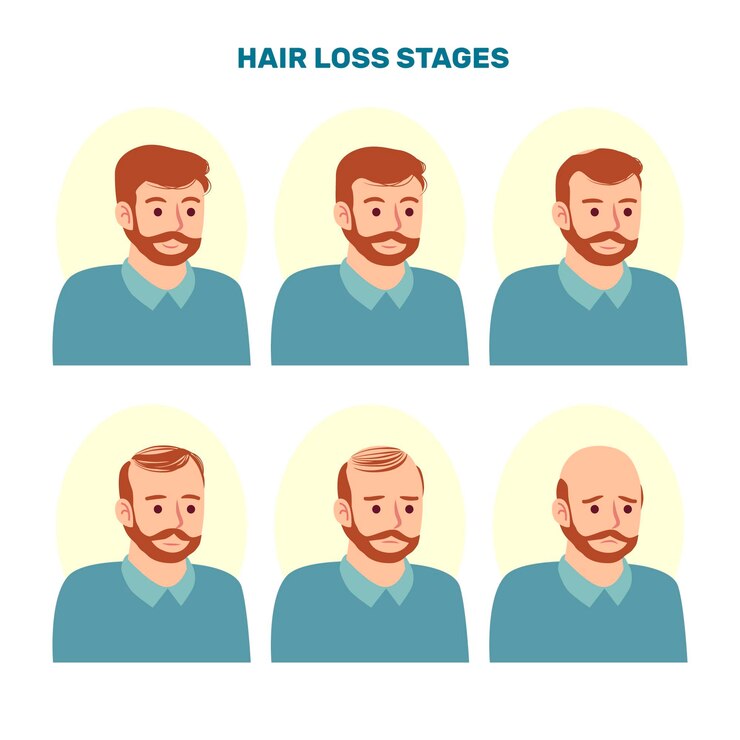People opt for hair transplants for various reasons, primarily driven by the desire to enhance their appearance and boost self-confidence. Hair loss can have a significant emotional and psychological impact, leading individuals to seek effective solutions. Hair transplant procedures offer a permanent solution to hair loss, allowing individuals to regain a fuller head of hair and improve their overall quality of life. Additionally, advancements in hair transplant techniques have made the procedure more accessible, minimally invasive, and affordable, further encouraging people to choose this option.

Common Myths and Misconceptions
Myth 1: Hair Transplants Are Only for Men
While it’s true that male pattern baldness is a common reason for seeking a hair transplant, women can also benefit from this procedure. Female pattern hair loss, traction alopecia, and other forms of hair loss can be effectively treated with hair transplantation. Women experiencing hair thinning or bald patches can achieve significant improvements in their hair density and overall appearance through this procedure.
Myth 2: Hair Transplants Look Unnatural
Thanks to advancements in hair transplant techniques, the results of modern hair transplants are incredibly natural-looking. Procedures like Follicular Unit Extraction (FUE) and Follicular Unit Transplantation (FUT) involve meticulous placement of hair follicles to mimic natural hair growth patterns. When performed by skilled surgeons, the transplanted hair blends seamlessly with the existing hair, making it virtually indistinguishable.
Myth 3: Hair Transplants Are Painful
Hair transplant procedures are typically performed under local anesthesia, ensuring that patients experience minimal discomfort during the surgery. Post-operative pain is usually mild and can be managed with over-the-counter pain relievers. Most patients are able to return to their normal activities within a few days.
Myth 4: Hair Transplants Are Not Permanent
One of the biggest misconceptions about hair transplants is that the results are not permanent. In reality, the transplanted hair follicles are taken from areas of the scalp that are genetically resistant to hair loss, such as the back and sides of the head. These follicles continue to grow hair for a lifetime, providing a permanent solution to hair loss.
Myth 5: Hair Transplants Are Expensive
The cost of hair transplants can vary depending on various factors, including the extent of hair loss, the technique used, and the geographic location of the clinic. However, considering the permanent nature of the results, hair transplants can be a cost-effective solution in the long run. Many clinics also offer financing options to make the procedure more affordable for patients.
Best Countries for Affordable Hair Transplant
When considering a hair transplant, it’s essential to choose a reputable clinic that offers high-quality services at an affordable price. Several countries are known for providing top-notch hair transplant procedures at a fraction of the cost compared to others. India is a leading destination for affordable hair transplants, thanks to its world-class medical facilities and highly skilled surgeons. Other countries that offer affordable hair transplant options include Turkey, Thailand, and Mexico.
Benefits of Hair Transplant
- Natural-Looking Results:- One of the most significant benefits of hair transplants is the natural-looking results they provide. Advanced techniques like FUE and FUT allow for precise placement of hair follicles, ensuring that the transplanted hair blends seamlessly with the existing hair. This creates a natural appearance that enhances the patient’s overall look and boosts their self-confidence.
- Permanent Solution:- Unlike temporary hair loss solutions such as wigs or medications, hair transplants offer a permanent solution to hair loss. The transplanted hair follicles are genetically resistant to balding and continue to grow hair for a lifetime, providing lasting results.
- Improved Self-Esteem:- Hair loss can have a profound impact on an individual’s self-esteem and confidence. By restoring a fuller head of hair, hair transplants can significantly improve a person’s self-image and quality of life. Patients often report feeling more confident and comfortable in social and professional settings after undergoing the procedure.
- Low Maintenance:- Transplanted hair requires minimal maintenance once it has fully grown in. Patients can treat their transplanted hair just like their natural hair, with no special products or treatments needed. This makes hair transplants a convenient and hassle-free solution to hair loss.
Suggestions from Tvaksh Clinic Before Getting Hair Transplant by Dr. Suraj Shetty
Dr. Suraj Shetty of Tvaksh Clinic offers several important suggestions for individuals considering a hair transplant:
- Consult with a Qualified Surgeon: It’s crucial to choose a skilled and experienced surgeon to ensure the best results. Research the surgeon’s credentials, reviews, and before-and-after photos of previous patients.
- Understand the Procedure: Educate yourself about the hair transplant procedure, including the different techniques available, the recovery process, and potential risks and complications. This will help you make an informed decision.
- Have Realistic Expectations: While hair transplants can provide significant improvements, it’s important to have realistic expectations about the results. Discuss your goals with the surgeon and understand what can be realistically achieved.
- Follow Pre- and Post-Operative Instructions: Adhering to the surgeon’s pre- and post-operative instructions is essential for a successful outcome. This includes taking prescribed medications, avoiding certain activities, and attending follow-up appointments.
- Be Patient: Hair growth after a transplant takes time. It may take several months to see noticeable results, and full growth can take up to a year. Patience is key to achieving the desired outcome.
By following these suggestions, individuals can enhance their chances of a successful and satisfying hair transplant experience.

